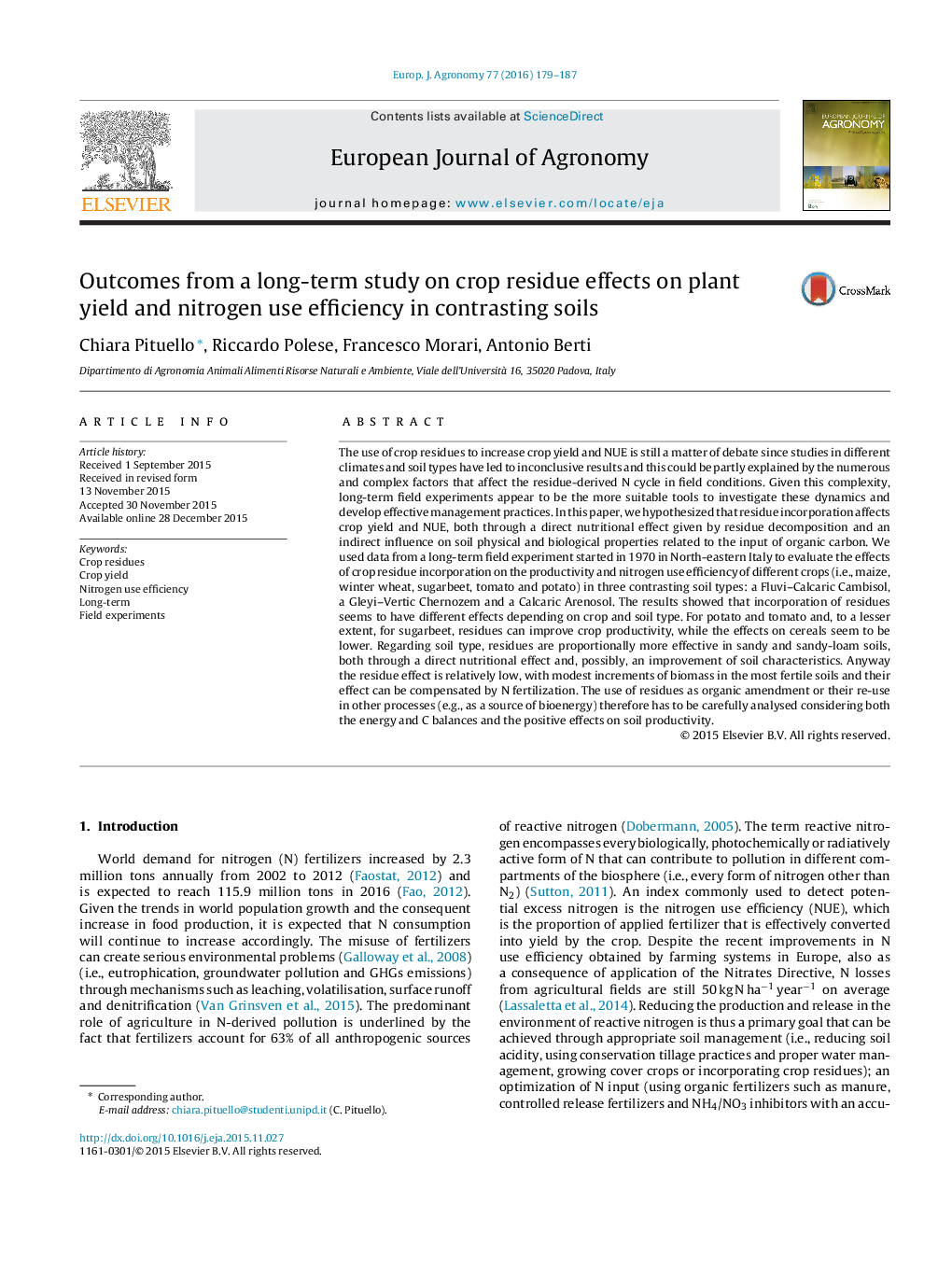| کد مقاله | کد نشریه | سال انتشار | مقاله انگلیسی | نسخه تمام متن |
|---|---|---|---|---|
| 4508720 | 1624448 | 2016 | 9 صفحه PDF | دانلود رایگان |
• Incorporation of residues seems to have different effects depending on crop and soil type.
• For potato and tomato and, to a lesser extent, for sugarbeet, residues can improve crop productivity, while the effects on cereals seem to be lower.
• Residues are more effective in sandy and sandy-loam soils, both through a direct nutritional effect and to an improvement of soil characteristics.
• Residue effect is relatively low, with modest increments of biomass in the most fertile soils.
The use of crop residues to increase crop yield and NUE is still a matter of debate since studies in different climates and soil types have led to inconclusive results and this could be partly explained by the numerous and complex factors that affect the residue-derived N cycle in field conditions. Given this complexity, long-term field experiments appear to be the more suitable tools to investigate these dynamics and develop effective management practices. In this paper, we hypothesized that residue incorporation affects crop yield and NUE, both through a direct nutritional effect given by residue decomposition and an indirect influence on soil physical and biological properties related to the input of organic carbon. We used data from a long-term field experiment started in 1970 in North-eastern Italy to evaluate the effects of crop residue incorporation on the productivity and nitrogen use efficiency of different crops (i.e., maize, winter wheat, sugarbeet, tomato and potato) in three contrasting soil types: a Fluvi–Calcaric Cambisol, a Gleyi–Vertic Chernozem and a Calcaric Arenosol. The results showed that incorporation of residues seems to have different effects depending on crop and soil type. For potato and tomato and, to a lesser extent, for sugarbeet, residues can improve crop productivity, while the effects on cereals seem to be lower. Regarding soil type, residues are proportionally more effective in sandy and sandy-loam soils, both through a direct nutritional effect and, possibly, an improvement of soil characteristics. Anyway the residue effect is relatively low, with modest increments of biomass in the most fertile soils and their effect can be compensated by N fertilization. The use of residues as organic amendment or their re-use in other processes (e.g., as a source of bioenergy) therefore has to be carefully analysed considering both the energy and C balances and the positive effects on soil productivity.
Journal: European Journal of Agronomy - Volume 77, July 2016, Pages 179–187
